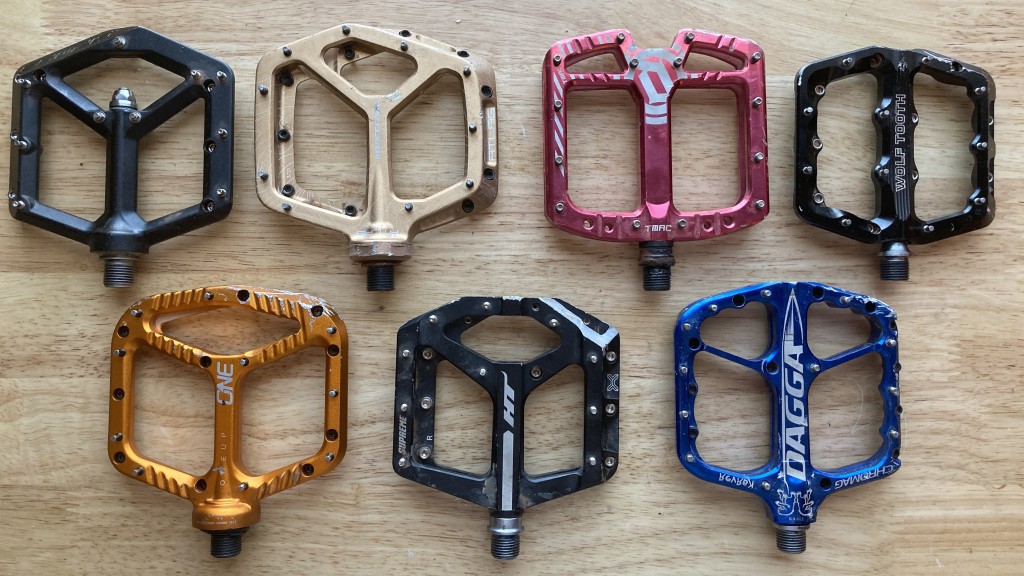


When it comes to mountain bike pedals, one common question arises: “Are all mountain bike pedals the same size?” Pedals are a crucial component of any bike, affecting your cycling experience and performance.
In this comprehensive guide, we will delve into the world of mountain bike pedals, discussing their sizes, variations, and compatibility factors.
Whether you’re a seasoned rider or a beginner exploring pedal options, understanding the nuances of pedal sizing is essential for a comfortable and efficient ride.
Let’s unravel the intricacies of mountain bike pedals and discover the answer to the question: Are all mountain bike pedals the same size?
Read More: How to make your mountain bike faster
Demystifying Pedal Sizes



Pedals are an essential component of any mountain bike, as they serve as the direct connection point between the rider’s feet and the bike itself. One common question that arises among cyclists is whether all mountain bike pedals are the same size.
Read More: ” Is Mountain Bike Good For Beginners? “
To demystify this aspect, it’s important to understand that while there are standardized dimensions and threads for pedal axles, there are various types of pedals designed to cater to different riding styles and preferences.
Mountain bike pedals come in different shapes, designs, and sizes to accommodate the diverse needs of riders. The two primary types are clipless pedals and flat pedals.
Clipless pedals use a cleat system that attaches to compatible cycling shoes, providing a secure and efficient pedaling motion. Flat pedals, on the other hand, offer a larger platform and allow the rider to use regular shoes.
Within these categories, there can be variations in pedal size. Some clipless pedals have larger or smaller cleat contact areas, while flat pedals can vary in width and thickness.
Additionally, some pedals are designed specifically for downhill or trail riding, featuring larger platforms for better stability and control.
Understanding pedal size variations is crucial for finding the right fit and maximizing comfort and performance on your mountain bike.
The choice between pedal types and sizes ultimately depends on your riding style, preferences, and the type of terrain you’ll be tackling.
Different Types of Mountain Bike Pedals
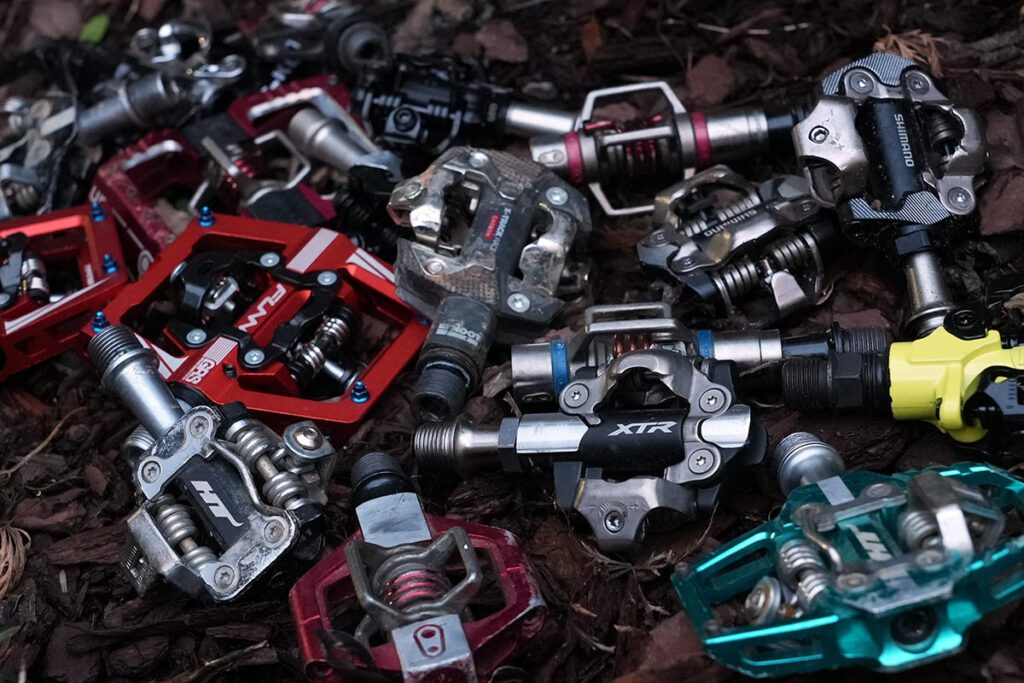


Mountain bike pedals come in a variety of types, each designed to cater to different riding styles and preferences. Choosing the right pedal type can significantly impact your cycling experience and overall performance.
Read More : ” Best Fat Bike Tires For Pavements “
Here are the main types of mountain bike pedals:
Flat Pedals:
Flat pedals, also known as platform pedals, are the most common type for casual and beginner riders. They provide a large surface area for your feet and allow you to use regular shoes.
Flat pedals are popular for downhill, freeride, and trail riding, as they offer quick foot placement and easy bail-out options.
Clipless Pedals:
Despite the name, clipless pedals require cycling-specific shoes with cleats that clip into the pedal mechanism. They offer a more efficient pedaling stroke, as the rider can both push down and pull up on the pedals.
Clipless pedals provide better power transfer, especially for climbing and road riding.
Clipless/Flat Combo Pedals:
These pedals offer the versatility of both clipless and flat options. One side has a clipless mechanism for efficient pedaling, while the other side is a flat pedal for times when you want to ride in regular shoes.
Platform Pedals with Pins:
These flat pedals have pins or studs that provide extra grip, making them suitable for aggressive trail and downhill riding. The pins prevent your feet from slipping off the pedals in challenging terrain.
Caged Pedals:
Caged pedals combine a flat pedal with a toe cage, allowing you to use regular shoes while still providing some added foot retention and power transfer.
Downhill Pedals:
Designed for downhill racing, these pedals often have a larger platform and more pins for maximum grip and control in fast, technical descents.
Ultralight Pedals:
These are minimalist clipless pedals designed for weight-conscious riders and competitive racing.
Touring Pedals:
Built for long-distance touring and commuting, these pedals are often dual-sided, with one side featuring a clipless mechanism and the other a flat pedal for more casual riding.
The choice of pedal type depends on your riding style, skill level, and personal preference. Before making a decision, consider factors like terrain, intended use, and the type of shoes you prefer to ride in.
Experimenting with different pedal types can help you find the best match for your mountain biking adventures.
Understanding Pedal Size Variations
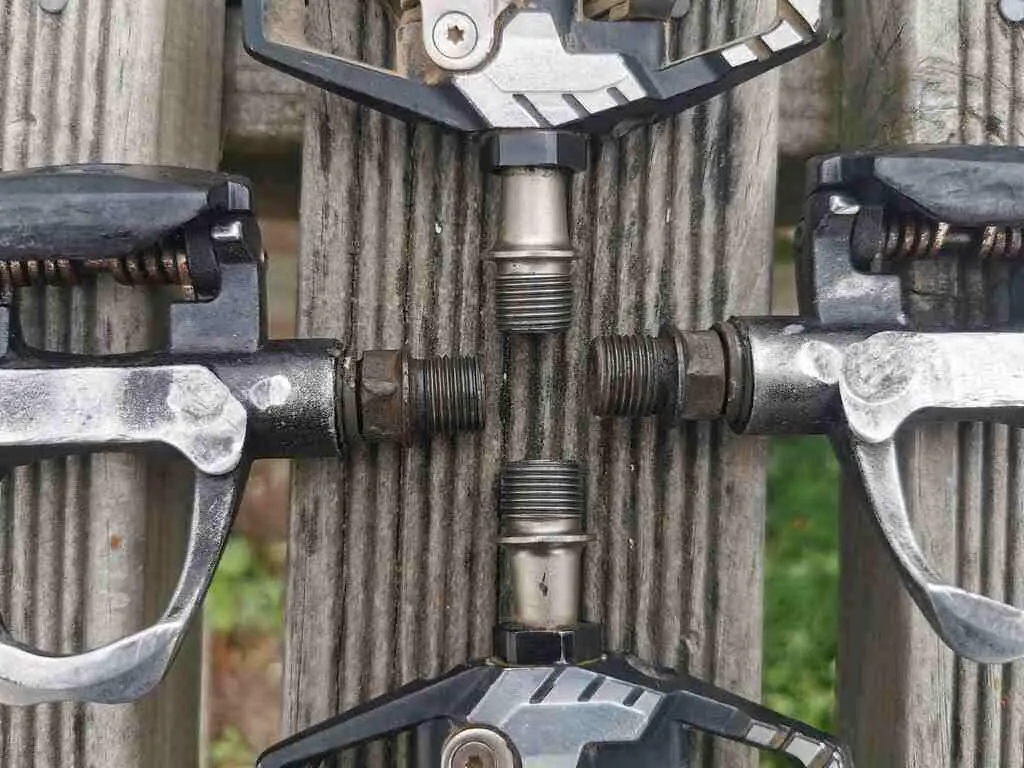


When it comes to mountain bike pedals, one important consideration is their size and dimensions. Pedal size can significantly impact your riding comfort, efficiency, and overall performance.
Read More: ” Top Five Electric Bikes “
Here’s a detailed look at pedal size variations and their implications:
Platform Area:
The size of the pedal’s platform, where your foot rests, affects stability and support. Larger platforms offer more surface area for your feet, distributing pressure and enhancing comfort during long rides.
Smaller platforms may provide a lightweight and agile feel, suitable for technical maneuvers.
Q-Factor:
This refers to the lateral distance between the pedal attachment points on the crank arms.
A narrower Q-factor can promote a more natural pedaling motion and reduce strain on the knees, while a wider Q-factor can offer stability, especially in off-road conditions.
Profile Height:
The thickness or height of the pedal body can affect ground clearance and the likelihood of pedal strikes when navigating rough terrain. Lower-profile pedals are less likely to hit obstacles and rocks.
Concavity and Shape:
Some pedals feature a concave shape, curving slightly downward toward the center. This design can help cradle your foot, providing a secure feel and better grip. Flat pedals with a concave shape can enhance comfort and control.
Pin Placement:
For flat pedals, the placement and number of traction pins play a crucial role in grip. Pedals with adjustable or replaceable pins allow you to fine-tune the level of traction and control.
Weight:
Larger pedals may weigh more due to their increased surface area and materials. Consider the trade-off between weight and stability based on your riding style and preferences.
Shoe Compatibility:
The size and shape of the pedal platform should match the sole of your cycling shoes. Ensure that your shoes sit comfortably and securely on the pedals for efficient power transfer and control.
Choosing the right pedal size involves a balance between comfort, efficiency, and personal preference.
Riders who prioritize long-distance comfort may opt for larger platforms, while those focused on agility and technical riding might prefer smaller, lightweight options.
Experimenting with different sizes and styles can help you find the perfect fit for your mountain biking adventures.
Compatibility Factors: Shoes and Pedals



When considering the size and type of mountain bike pedals, it’s essential to take into account the compatibility with your cycling shoes.
Read More : ” How To Work Gears On A Mountain Bike? “
The interaction between your shoes and pedals directly affects your pedaling efficiency, comfort, and overall riding experience.
Here’s a detailed look at the compatibility factors between shoes and pedals:
Cleat System:
Cycling shoes often come equipped with cleats that attach to the pedal for efficient power transfer. Different pedal systems, such as SPD, Look, or Crankbrothers, require specific cleat types.
Ensure your shoes have the appropriate cleat system that matches your chosen pedals.
Cleat Placement:
The position of cleats on your cycling shoes impacts your biomechanics and pedaling efficiency. Some pedal systems offer adjustable float, allowing your feet to pivot slightly while clipped in.
Proper cleat placement minimizes strain and enhances comfort during long rides.
Pedal-Shoe Interface:
The engagement and disengagement mechanism of pedals vary. Some systems provide a secure and firm connection, while others prioritize quick and easy release. Choose a system that aligns with your riding style and skill level.
Sole Stiffness:
Mountain bike shoes come with varying degrees of sole stiffness. Stiffer soles efficiently transfer power to the pedal and offer stability. Match the stiffness of your shoe soles with the demands of your pedal system for optimal performance.
Traction and Grip:
Consider the outsole design of your cycling shoes. A grippy and durable outsole enhances traction when you need to walk or hike on uneven terrain. For flat pedals, shoes with a sticky rubber compound provide a secure grip.
Shoe-Pedal Contact Area:
Different pedal sizes and shapes require specific shoe profiles. Ensure that the contact area of your shoes aligns with the pedal platform for efficient power transfer and stability.
Release Tension:
Some pedal systems allow you to adjust the release tension, determining how much force is needed to disengage from the pedal. Finding the right tension level contributes to a balance between secure connection and ease of release.
Multi-Purpose Versatility:
If you use the same shoes for various cycling disciplines, such as road and mountain biking, consider a pedal system that accommodates both cleated and flat shoe options.
To optimize your mountain biking experience, choose a pedal and shoe combination that offers seamless compatibility. Prioritize comfort, efficiency, and control to ensure a smooth ride on a variety of terrains and conditions.
Pedal Sizing for Optimal Riding Performance



Pedal sizing is a critical consideration when selecting mountain bike pedals. The size and design of pedals directly impact your riding performance, comfort, and control.
Here’s an in-depth exploration of pedal sizing and its influence on your biking experience:
Platform Size:
Mountain bike pedals come in various platform sizes, typically ranging from small to large. A larger pedal platform provides a more stable and supportive base for your feet, enhancing power transfer and control.
For riders who value stability, larger platforms offer better foot placement and reduced fatigue during long rides.
Q-Factor:
The Q-factor refers to the distance between the pedal attachment points on the crank arms. Optimal Q-factor alignment reduces stress on your knees, promotes efficient pedaling mechanics, and minimizes discomfort.
Consider pedal width and the corresponding Q-factor to match your natural biomechanics.
Rider Shoe Size:
Pedal sizing should complement your shoe size. A pedal that is too small can cause discomfort and reduce power transfer, while an overly large pedal might be challenging to control. Match the pedal size to your shoe size for a snug and comfortable fit.
Riding Style and Terrain:
Your preferred riding style and terrain influence pedal size choice. For aggressive downhill or technical trail riding, larger pedals provide better stability and control.
Smaller, lighter pedals may be favored by cross-country riders aiming for efficiency and speed.
Foot Placement:
Consider how your feet naturally rest on the pedals. The right-sized pedals ensure that your feet are fully supported without overhanging the edges. Proper foot placement enhances pedal engagement and minimizes the risk of accidental slips.
Cleat Compatibility:
If you’re using clipless pedal systems, ensure the pedal size accommodates the cleat attachment mechanism of your cycling shoes. The pedal surface should align with the cleat for effective engagement and disengagement.
Weight and Material:
Pedal size can impact weight and material choice. Larger pedals may be slightly heavier, but they can offer more durability and a solid platform. Evaluate your preferences for weight savings versus robustness.
Personal Preference:
Ultimately, the best pedal size is a matter of personal preference and riding style. Test different sizes to determine which feels most comfortable and suits your needs on varied trails.
Selecting the right pedal size contributes to better control, stability, and efficient power transfer. Carefully evaluate your riding goals, shoe size, and terrain preferences to make an informed choice that enhances your mountain biking experience.
Upgrading Pedals: Ensuring Proper Fit
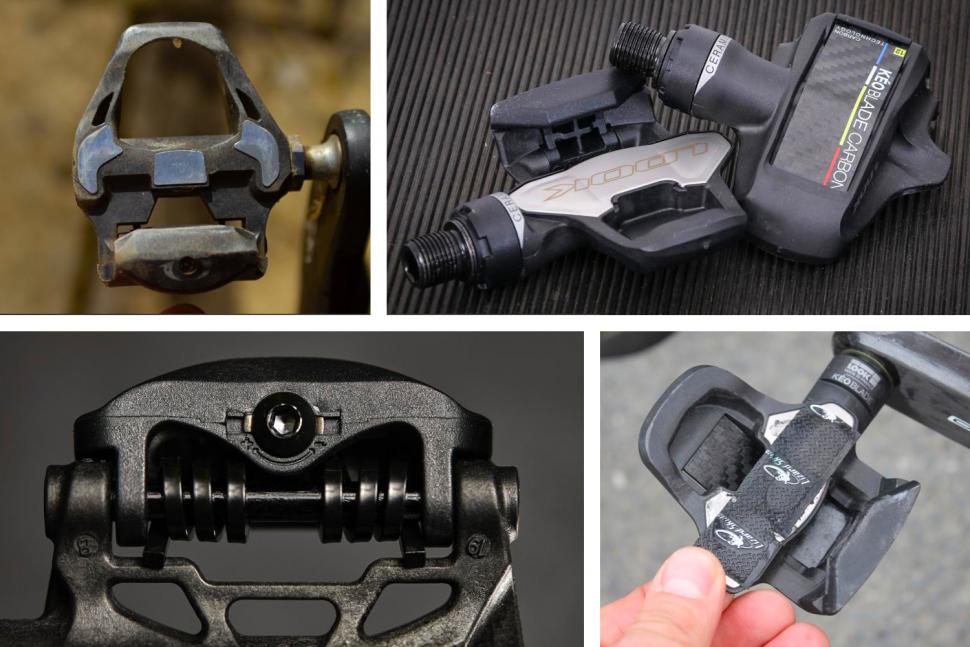


Upgrading pedals on your mountain bike can significantly enhance your riding experience, but ensuring a proper fit is crucial for optimal performance and comfort.
Here’s a detailed look at upgrading pedals and how to ensure the right fit:
Compatibility Assessment:
Before upgrading, ensure your new pedals are compatible with your bike’s crankset and bottom bracket. Check for the correct thread size (standard or metric) and axle type (9/16 inch is common).
Verify that the new pedals align with your bike’s intended use, whether it’s cross-country, trail, all-mountain, or downhill riding.
Pedal Types and Features:
Consider the type of riding you do and choose pedals that suit your preferences. Flat pedals are versatile for various terrains, while clipless pedals provide efficient power transfer.
Some pedals offer adjustable release tension and customizable float for clipless engagement.
Platform Size and Shape:
Upgrading pedals may allow you to choose a platform size and shape that better fits your feet. A larger platform can provide improved stability, especially for aggressive riding.
Evaluate the dimensions and proportions of the new pedals to ensure they accommodate your foot size and shape comfortably.
Cleat Compatibility:
If upgrading to clipless pedals, ensure your new pedals are compatible with your existing cycling shoes’ cleats. Different pedal brands often have specific cleat designs, so make sure they match for secure engagement and easy release.
Installation and Adjustment:
Properly install and adjust your new pedals according to the manufacturer’s guidelines. Follow the recommended torque specifications to prevent over-tightening or under-tightening, which can affect performance and safety.
Testing and Adjusting:
After installation, take your bike for a short test ride to assess the fit and feel of the new pedals. Make any necessary adjustments to the pedal tension or cleat alignment to ensure comfort and efficient pedaling.
Rider Feedback:
Consider seeking feedback from experienced riders or consulting with a bike shop if you’re unsure about the fit or performance of your upgraded pedals. Their expertise can help fine-tune your pedal setup for the best results.
Gradual Transition:
If you’re new to clipless pedals, give yourself time to adapt to the new system. Start with a lower tension setting to make it easier to engage and disengage until you feel comfortable.
Upgrading pedals can transform your riding experience, providing better control, power transfer, and comfort.
Ensuring proper fit and compatibility is key to unlocking the full benefits of your new pedals, whether you’re seeking improved performance on trails or roads.
Common Myths and Misconceptions About Pedal Sizes



Pedal sizes and their impact on cycling performance have led to various myths and misconceptions.
Let’s debunk some of these misunderstandings:
One-Size-Fits-All:
Myth – All pedals are the same size and fit everyone’s feet. Reality – Pedal sizes can vary widely, affecting comfort and efficiency. Different foot sizes and shapes require appropriate platform dimensions for optimal support and power transfer.
Bigger is Always Better:
Myth – Larger pedals provide better performance. Reality – While a larger platform can offer more stability, excessively large pedals might hinder pedaling efficiency if they extend beyond the natural range of your foot movement.
Clipless Pedals are Uncomfortable:
Myth – Clipless pedals are uncomfortable for long rides. Reality – With proper adjustment and fitting, clipless pedals can offer excellent comfort, stability, and improved power transfer, even during extended rides.
Flat Pedals are Inefficient:
Myth – Flat pedals are less efficient than clipless pedals. Reality – Flat pedals can be highly efficient when combined with proper pedaling technique and suitable shoes. They are favored by many professional riders for technical terrain.
More Pins Mean Better Grip:
Myth – More pins on flat pedals mean better grip. Reality – While pins enhance grip, the placement and quality of pins are more critical than their quantity. Proper shoe-pedal interface and sole design also play a significant role.
Clipless Pedals Lead to Knee Pain:
Myth – Clipless pedals cause knee pain. Reality – Knee pain often results from improper cleat alignment, pedal tension, or bike fit. Correct setup and gradual adaptation can alleviate this issue.
Weight is the Only Factor:
Myth – Lighter pedals are always better. Reality – While weight matters, pedal durability, construction quality, and materials also affect overall performance and longevity.
Flat Pedals are Safer:
Myth – Flat pedals are safer than clipless pedals. Reality – Safety depends on rider experience, terrain, and preferences. Both pedal types have their advantages and risks.
Changing Pedals is Insignificant:
Myth – Switching pedals won’t make a noticeable difference. Reality – Properly chosen pedals can significantly impact comfort, performance, and enjoyment, especially for specific riding styles.
Pedal Size Equals Shoe Size:
Myth – Pedal size matches shoe size. Reality – Pedal size depends on foot width, arch shape, and riding style. Shoe size is just one factor to consider.
Understanding the truth behind these myths can help you make informed decisions when choosing and adjusting pedal sizes. The right pedal size, combined with proper technique and setup, contributes to a more enjoyable and efficient cycling experience.
Choosing the Right Pedal Size Practical Considerations
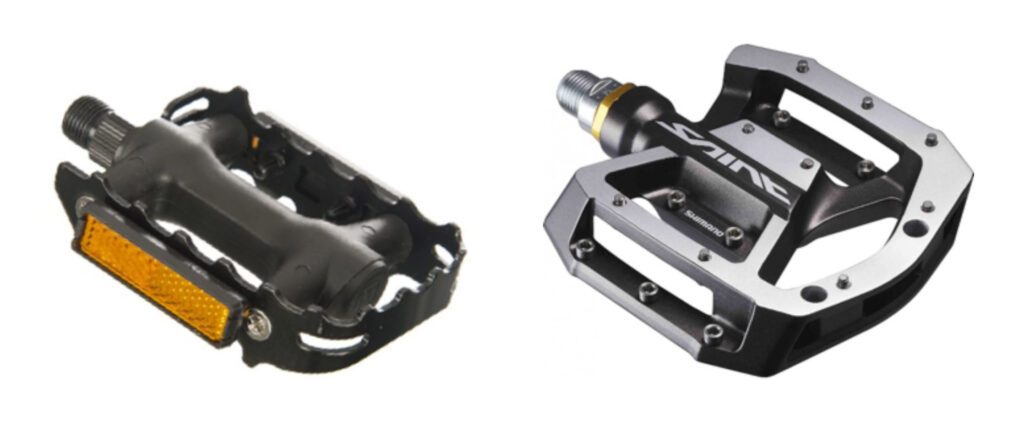


Selecting the appropriate pedal size for your mountain bike is crucial for comfort, performance, and safety.
Here are practical considerations to guide your decision:
Foot Size and Shape:
Pedals should offer a stable platform that matches your foot size and shape. Wide feet may require larger pedals, while narrower feet might benefit from more compact options.
Consider the natural alignment of your foot and ensure the pedal adequately supports it.
Riding Style:
Different riding styles demand varying pedal sizes. Downhill and aggressive trail riding may favor larger pedals for enhanced stability and control. Cross-country and endurance riders might prefer smaller pedals for efficiency and weight savings.
Shoe Compatibility:
Match pedal size with the sole of your cycling shoes. Ensure the shoes’ contact area comfortably fits on the pedal platform without overhang. This connection improves power transfer and control.
Terrain and Conditions:
Consider the terrain you frequently ride. Technical trails with rough descents may warrant larger pedals for added security. Smoother paths or road riding may allow for slightly smaller pedals that prioritize weight and aerodynamics.
Pedaling Technique:
Your pedaling technique affects pedal size choice. Riders who frequently shift weight or reposition their feet might prefer larger pedals with more space to maneuver. Efficient pedaling might lead to choosing slightly smaller pedals.
Clearance:
Evaluate the pedal’s clearance from obstacles like rocks and roots. Larger pedals could potentially increase the chances of striking obstacles, affecting your balance and control.
Comfort:
Comfort plays a significant role in long rides. Pedal size should allow your feet to find a natural position without strain. Discomfort or hotspots can impact performance and enjoyment.
Adaptation Period:
If transitioning from a different pedal size, give yourself time to adapt. Your muscles and riding technique may need adjustments to optimize your riding experience.
Test and Experiment:
If possible, test different pedal sizes to identify your preferred choice. Many bike shops offer demo pedals for trail rides, helping you make an informed decision.
Maintenance and Replacement:
Consider the availability of replacement parts and pedals in your chosen size. Ensure that you can easily find suitable replacements when needed.
Remember that choosing the right pedal size is a personal preference based on your unique characteristics and riding style. Experimentation and finding what feels best for you will ultimately lead to an enjoyable and optimized cycling experience.
Comparison Table Between some pedals
| Pedal Model | Pedal Type | Size (mm) | Weight (grams) | Material | Compatibility |
| Shimano XT M8000 | Clipless | 68 x 83 | 408 | Aluminum | SPD |
| Crankbrothers Mallet E | Clipless | 94 x 100 | 419 | Composite | 2-bolt cleats |
| Race Face Chester | Flat | 101 x 110 | 340 | Nylon Composite | All mountain shoes |
| DMR Vault | Flat | 105 x 105 | 430 | Aluminum | All mountain shoes |
| Time ATAC XC12 | Clipless | 96 x 124 | 250 | Composite | ATAC cleats |
Conclusion
In conclusion, the notion that all mountain bike pedals are the same size is a misconception. There is a diverse range of pedal sizes, types, and compatibility factors available to cater to different riding preferences and styles.
Riders should carefully consider their needs, shoe compatibility, and pedal type before selecting the right pedal size. Remember, a proper fit ensures optimal performance and comfort during your mountain biking adventures.
So, while pedal sizes may vary, the key is making an informed choice that complements your riding style and enhances your overall experience on the trails.
FAQ’s
How do I know my bike pedal size?
To determine your bike pedal size, first identify the pedal type (e.g., flat or clipless). Then, check the thread size (typically 9/16″ for most adult bikes) and choose compatible pedals for your riding style and shoe type.
Do all bikes fit the same pedals?
No, not all bikes fit the same pedals. Pedal compatibility depends on factors like pedal type (flat or clipless) and thread size. It’s important to choose pedals that match your bike’s specifications.
Does MTB pedal size matter?
Yes, MTB pedal size matters. It affects your comfort, control, and power transfer. Using the right size pedal ensures optimal riding performance and reduces the risk of discomfort or injury.
How do I know if my bike pedals are 9 16 or 1 2?
Yes, MTB pedal size matters. It affects your comfort, control, and power transfer. Using the right size pedal ensures optimal riding performance and reduces the risk of discomfort or injury.
Are all pedal pins the same size?
No, not all pedal pins are the same size. Different pedals may have varying pin sizes for traction. It’s important to choose pins compatible with your pedal model.
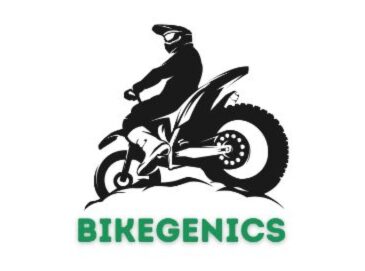


Welcome to Bikegenics, where passion meets performance! We are a leading online destination for all things related to mountain biking, dedicated to providing you with top-notch gear, expert advice, and an immersive community to fuel your two-wheeled adventures. With a commitment to excellence and a deep love for the sport, we strive to elevate your biking experience to new heights.
